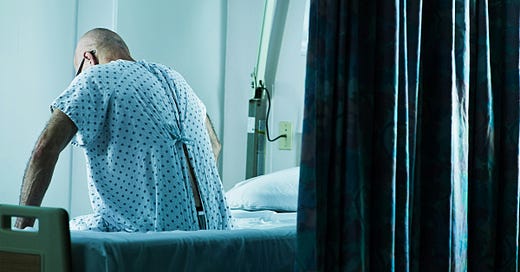If Temu sold policies, the End of Life Choice Act 2019 would be a top seller. It offers dignity to counter our deepest fears, agency that soothes our need for control, and safeguards to guarantee fairness. It is as glossy as they come. But does the reality of euthanasia in New Zealand look anything like the freedom of choice promised on the box?
Shortly before the Ministry of Health concluded in its 2024 report that the Act’s implementation had “largely been operating well,” we learned that those outside the marketing department disagreed.
The committee tasked with reviewing euthanasia death reports found missing, conflicting, and alarming information. Far from the process being safe, they said they “would not be able to detect wrongdoing if it was occurring.” The Ministry only added to their alarm, instructing them to “assume nothing was wrong” when required information was missing.
So the committee never discovered how one person who didn’t speak English, had no translator present at their assessment, and likely suffered from dementia had been euthanised.
If safety can’t be guaranteed, neither can fairness. The committee saw more applications from rural areas than they expected—areas that have some of the worst access to palliative care specialists and hospices. Our end-of-life care is patchy at best; New Zealand needs more than twice the current number of specialists to serve the 90% of us who will need their expertise. Unlike euthanasia, end-of-life care is not fully funded.
This is why one woman saw her mother die in an ED cubicle instead of at home, and why some rural residents are 200km from specialist care. We’re supposed to believe that universal access to euthanasia is a compassionate addition to the available choices. But as long as much of the country lacks good end-of-life care, it seems simply expedient.
Even Belgium, with its liberal euthanasia laws, aspires to offer a fair choice. Its legislation includes a “right to palliative care” provision. Why? Because any health system that doesn’t offer to ease all patients’ suffering should never offer all patients a terminal “fix.”
Palliative care provides expert pain and symptom relief, in-home support, counselling, ongoing assistance for whanau and a raft of wrap-around services. Hospices train physicians in these skills, and they provide peaceful places for people in their final chapter. The atmosphere in the hospice where journalist Jen Nolan’s brother died was, she wrote, “sacred, quiet, soft.” In her words, “there was no better place for him to be.”
Most hospices get some Government funding, but our health system’s commitment to that network is so tepid that they all rely on fundraising, volunteers, and a network of op shops to keep their doors open. In the words of two palliative care specialists, “the Government has not developed a fair palliative care system, and it is the dying patients and their whānau who are suffering because of it.”
The Ministry of Health doesn’t appear to support all choices equally. Its report glosses over the ineffectiveness of safeguards and even recommends removing some to speed up the process. Never mind that the shortest time from application to death is already just two days, or that euthanasia laws elsewhere require a cool-down period. Why? Because suicidal patients often change their minds.
Nowhere are these tensions more clearly seen than in the Ministry’s characterisation of Māori whānau who equate euthanasia with suicide. The Ministry describes this attitude as “point[ing] to a lack of awareness and acceptability of assisted dying within Māori communities” and issues a clear prescription: assisted dying must become “familiar, understood, and accepted.”
Translation? If you don’t like this “choice,” you need to change.
Here’s what needs to change if we want vulnerable people to have true choice. Let’s start with end-of-life care that isn’t provided by postcode lottery. Health NZ should actively find, train, and value palliative care specialists so that we all have the support we need in our final days. Hospices should be able to tap charitable funding for nice-to-haves, not having to rely on it to keep the lights on. It makes economic sense; for every $1 that the Government gives hospices in funding, they return $1.59 in services.
Maybe the intention is there, and good things just take time. Now that euthanasia is legal and fully funded, our health system might begin ensuring that palliative care becomes familiar, understood, and fully funded too.
But I’m not ready to bet my life on it.
This article originally appeared in The Post.




